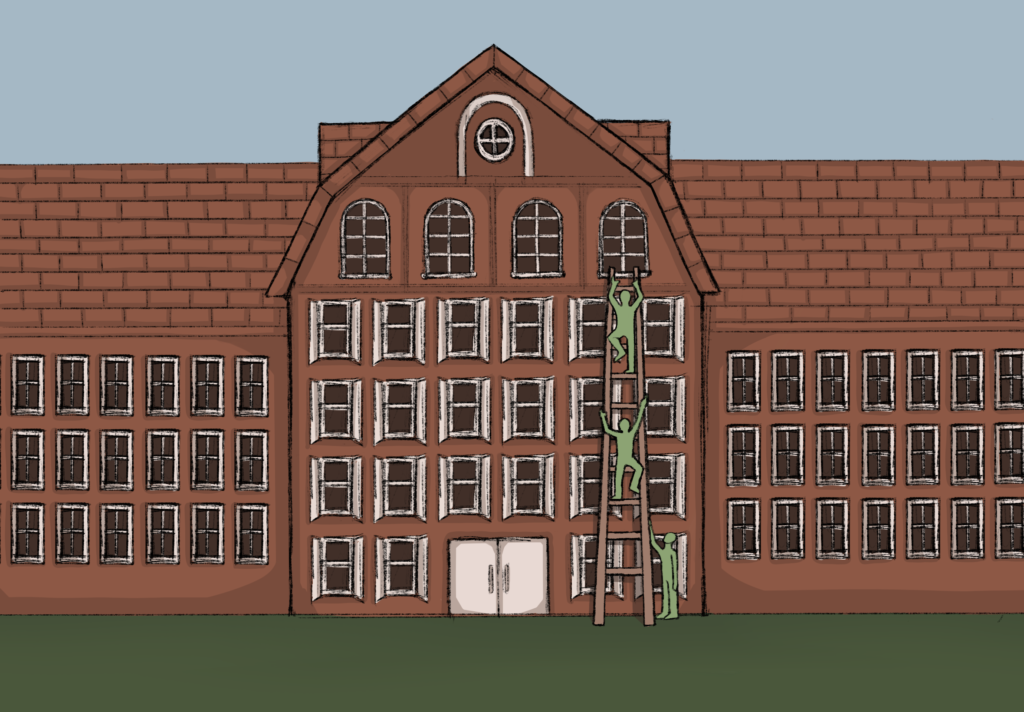I am often told that being a day student from Wallingford is the ideal situation for a Choate student. You can reap the benefits of going home every night, perhaps for a home-cooked meal or for a conversation with your parents. But living within walking distance of campus, you can also fully participate in the community — something not all day students can do easily. With graduation a mere nine days away, I’ve come to appreciate this balance. But attending Choate as a Wallingford resident is a much more nuanced, complex experience than most community members might imagine.
Having grown up in this town, Choate was an integral part of my life, even before I matriculated. I had taken piano lessons in the PMAC. I had been a member of the local swim team that practiced at the Larry Hart Pool, and I had gone on bike rides with friends on the cross country course. And, to some extent, most residents of the area are connected to Choate. Some of my classmates in elementary and middle school were children of Choate faculty, and many of my friends also took advantage of the School’s facilities. After opening my Choate acceptance letter, I knew that for most of my future classmates, going to Choate meant stepping into a great deal of unfamiliarity. But for me, Choate was a place I had already become comfortable with. During freshman year, I tried out for the swim team in the same pool I had been practicing in for several years of my life. I continued to play the piano with the same teacher. I joined the cross country team, already knowing my way around the course.
Though I already felt familiar with many aspects of Choate, I did not anticipate every aspect of the Choate community and the many ways in which it would differ from the Wallingford community. I was not used to being surrounded by students who spoke four different languages or who had homes in three different countries. Additionally, though I knew Choate would be a much more competitive environment than my middle school, I was still surprised to see that all of my classmates completed their homework everyday.
After time, as I became more involved with the Choate community, I not only grew accustomed to the “Choate life”; I came to identify with it. However, I never thought my newfound Choate identity would alter my Wallingford identity. Initially, I had believed I could both be a Choate student and maintain roots in the town. Looking back, the reality was quite the opposite. During the beginning of my freshman year, I often spent time with my friends from middle school, and my family members were played a constant role in my life. But as the pace of my Choate life quickened, I found myself returning home later and losing touch with the people I used to call my closest friends. I eventually grew distant from the Wallingford community, even though I had not moved away.
I still consider Wallingford home. But I ask myself: Do I consider Wallingford my home because of Choate’s presence in this town? When I think of Wallingford, I think of Choate. However, when I think of Choate, I don’t necessarily think of Wallingford. Perhaps I do identify with Choate more than I identify with Wallingford. Even as I introduce myself to people as I prepare to enter college, I catch myself saying that I am a day student at a boarding school in Connecticut. Simply stating, “I’m from Connecticut” feels like I’m omitting an important part of my identity.
Attending this school as a Wallingford resident is unlike the experiences most Choate students have. For many, coming to Choate is a physical separation from home, our campus being many miles away from the place you came from. But Choate distanced me from Wallingford, even though I never left.



